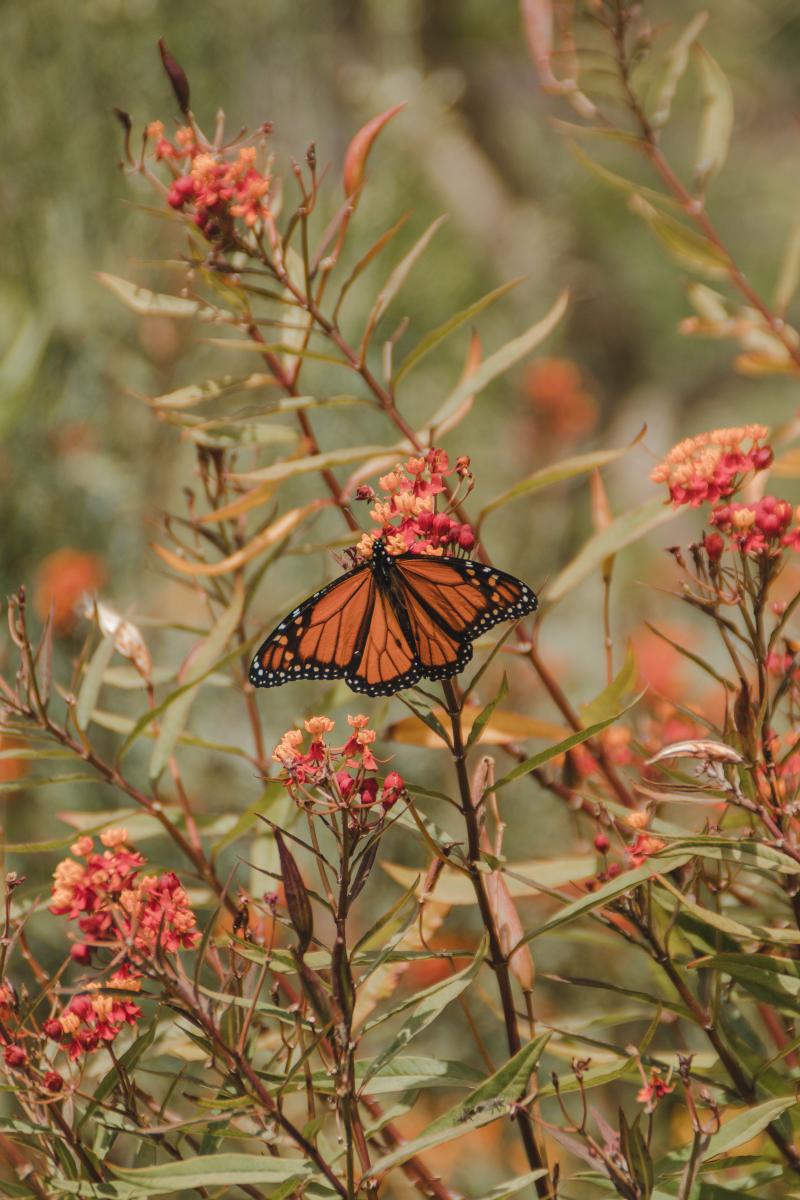Pesticide contamination of monarch host plants found across multiple landscape types in farming region
 A recent study published in the journal Frontiers in Ecology and Evolution has found pesticide contamination of milkweed, the host plant of monarchs, across multiple landscape types, exposing the butterflies to a cocktail of harmful chemicals. The study detected 64 synthetic chemicals on milkweed, with agricultural and retail sites testing highest for diversity and concentrations of pesticides. Detection of synthetic chemicals on host plants in places where chemicals are not sprayed, such as refuge habitats, suggests that drift from pesticide spray events causes exposure in protected areas. The use of pesticides is linked to declines in insect populations, particularly sensitive ones like butterflies, whether the chemical targets insects or not. Sub-lethal doses of herbicides, fungicides, and even adjuvants (also known as spreader-stickers mixed in solutions to help sprays stick to plants) can accumulate in insects across multiple life stages, ultimately disrupting the growth or reproductive health of beneficial insects, and pesticide drift can cause far-reaching damage from a spray event.
A recent study published in the journal Frontiers in Ecology and Evolution has found pesticide contamination of milkweed, the host plant of monarchs, across multiple landscape types, exposing the butterflies to a cocktail of harmful chemicals. The study detected 64 synthetic chemicals on milkweed, with agricultural and retail sites testing highest for diversity and concentrations of pesticides. Detection of synthetic chemicals on host plants in places where chemicals are not sprayed, such as refuge habitats, suggests that drift from pesticide spray events causes exposure in protected areas. The use of pesticides is linked to declines in insect populations, particularly sensitive ones like butterflies, whether the chemical targets insects or not. Sub-lethal doses of herbicides, fungicides, and even adjuvants (also known as spreader-stickers mixed in solutions to help sprays stick to plants) can accumulate in insects across multiple life stages, ultimately disrupting the growth or reproductive health of beneficial insects, and pesticide drift can cause far-reaching damage from a spray event.
Many other studies have found that monarchs migrating through the midwestern region of the U.S. are frequently exposed to pesticides as their milkweed host plants tend to grow in agricultural field margins where exposure to pesticides used in conventional agricultural is high. This study was aimed to test pesticide exposure in the western part of the U.S. to see if Western migration route for monarchs could be similarly contaminated, or safer. The researchers collected milkweed samples from various landscape types including retail spaces, urban areas, natural habitat refuges, and agricultural sites throughout the Central Valley of California. They screened for 262 pesticides and found 25 insecticides, 17 fungicides, 11 herbicides and one adjuvant with seven chemicals detected in over 50% of the samples. While the detection of many chemicals in milkweed collected from conventional farms is not surprising, the presence of chemicals in refuge areas surrounded by conventional ag indicates that drift from spray events is carrying harmful pesticides to these protected areas. The results from this study indicate that the best way to protect butterflies and other important biodiversity is to avoid using harmful chemicals in the first place, and organic farming takes this step in the right direction.
Photo: Monarch on milkweed plant, Credit: Britt Gaiser; unsplash.com
Banner Photo Credit: Kathy Servian; unsplash.com

